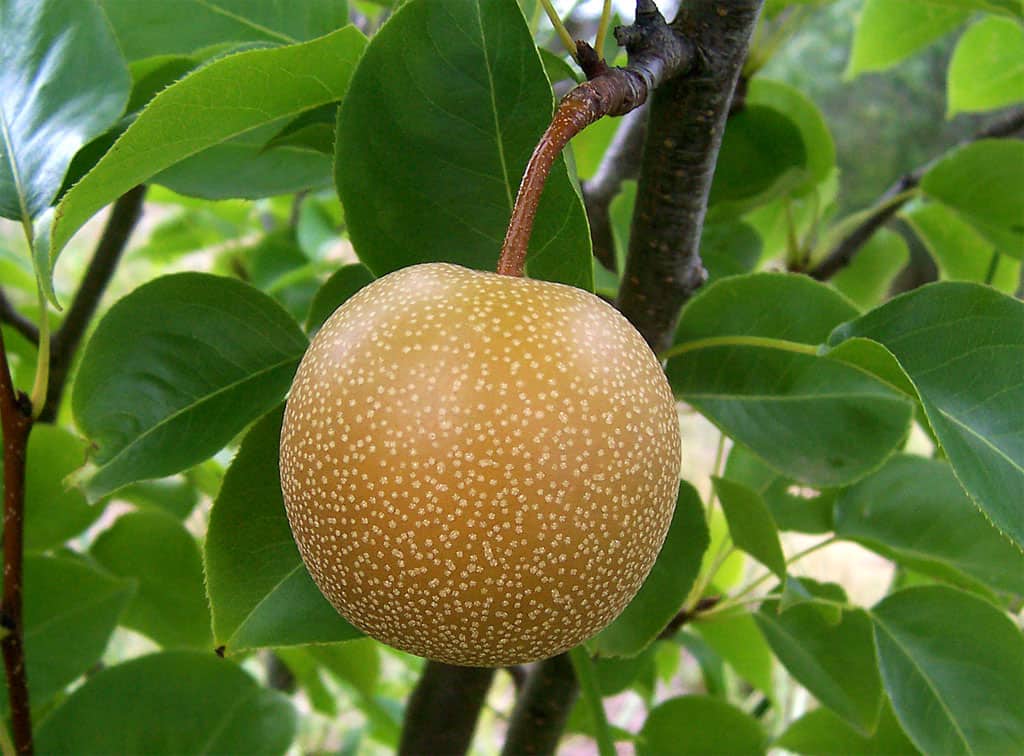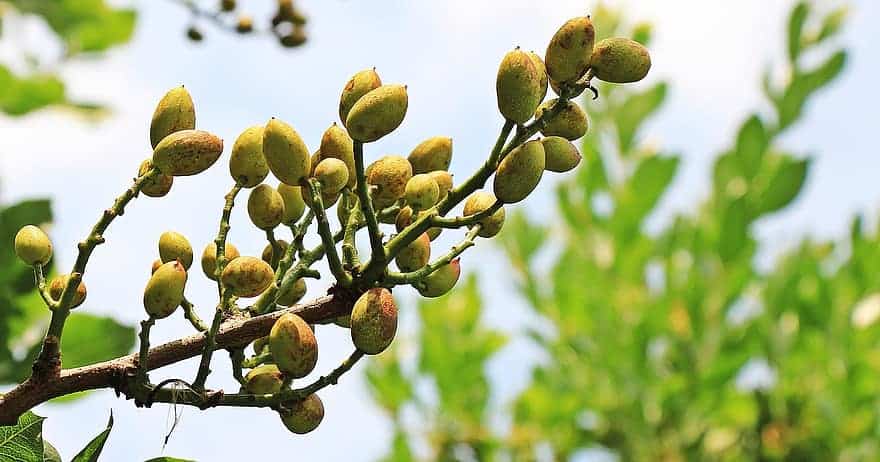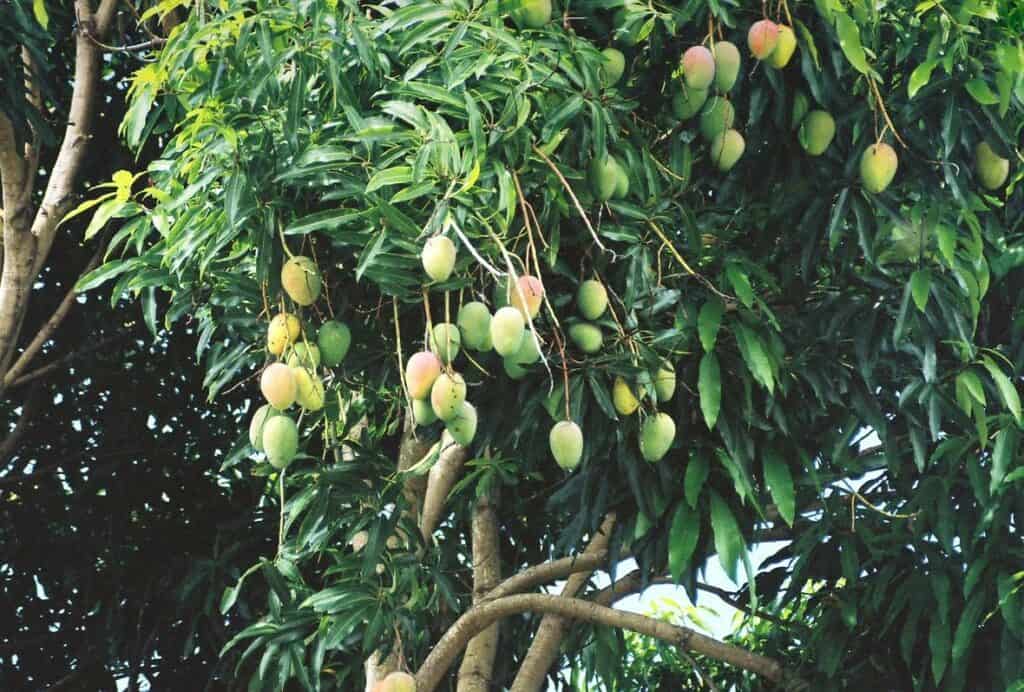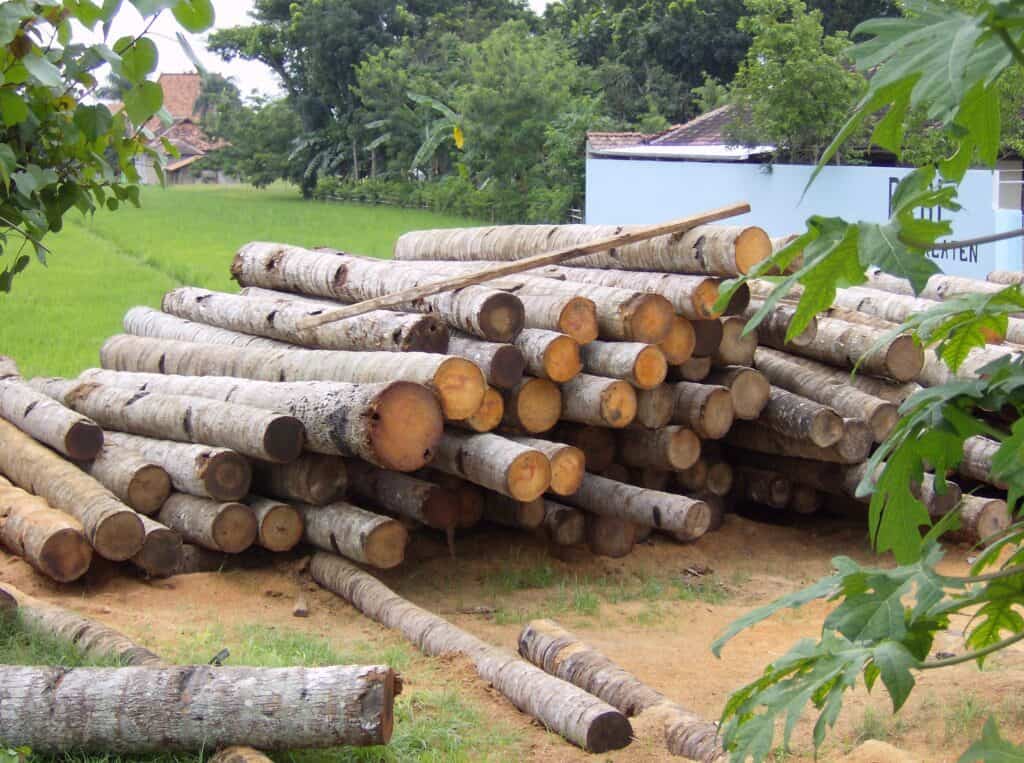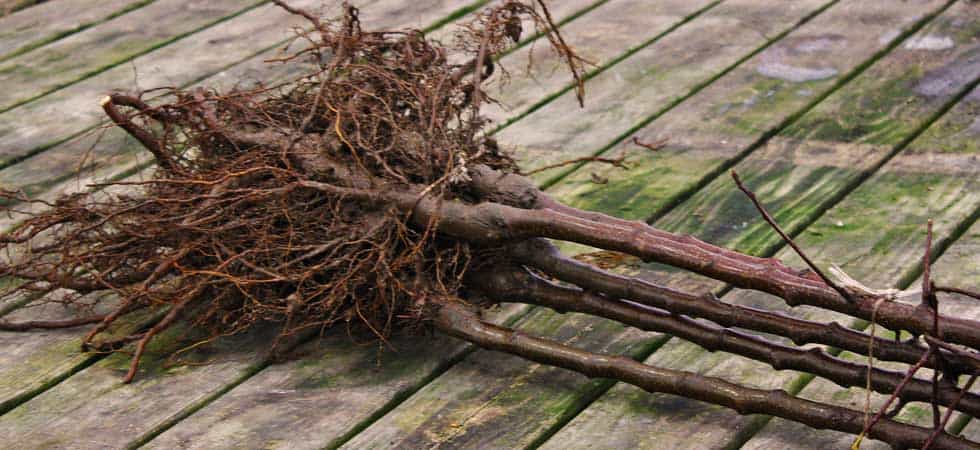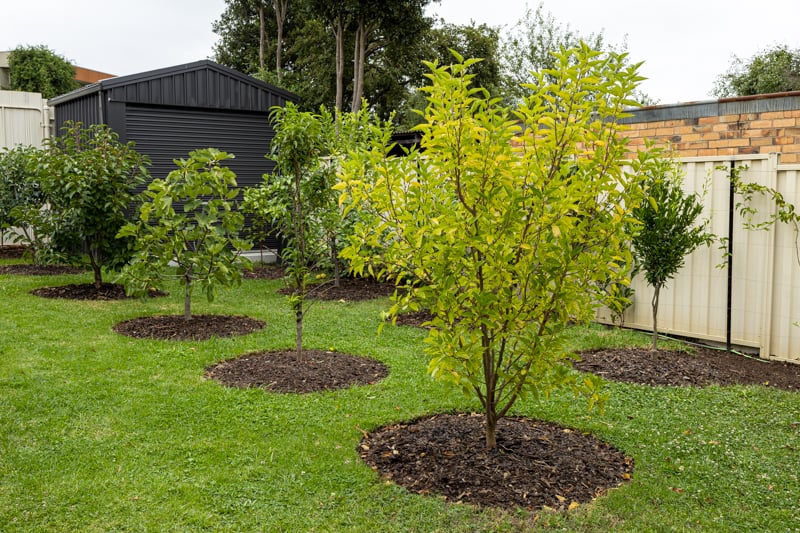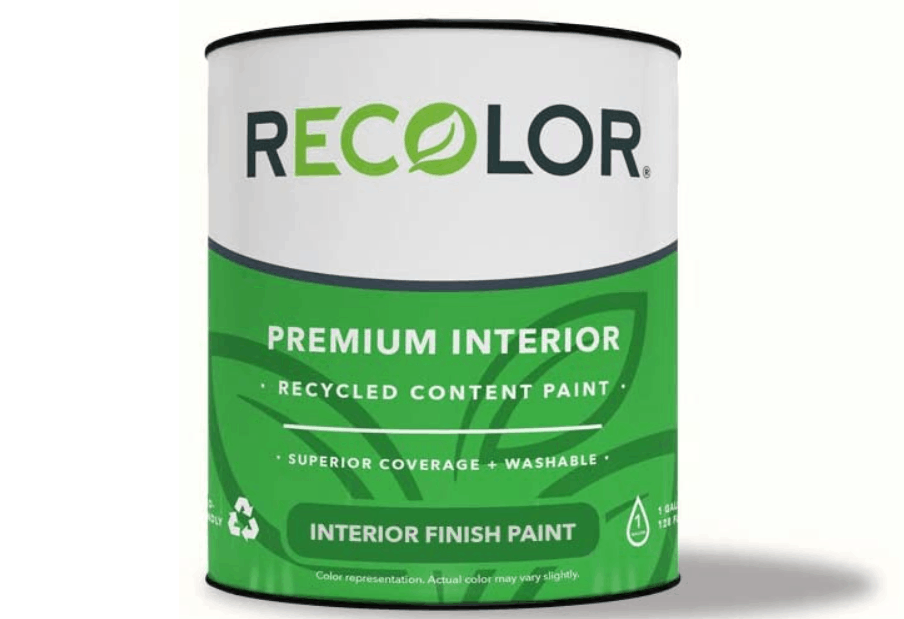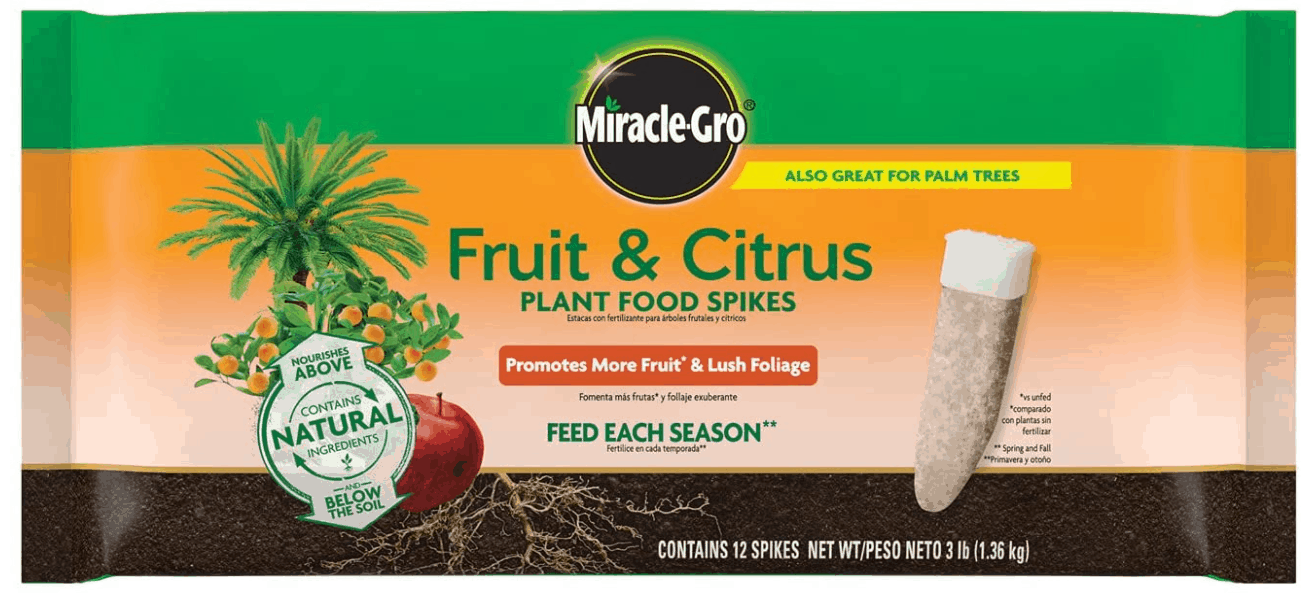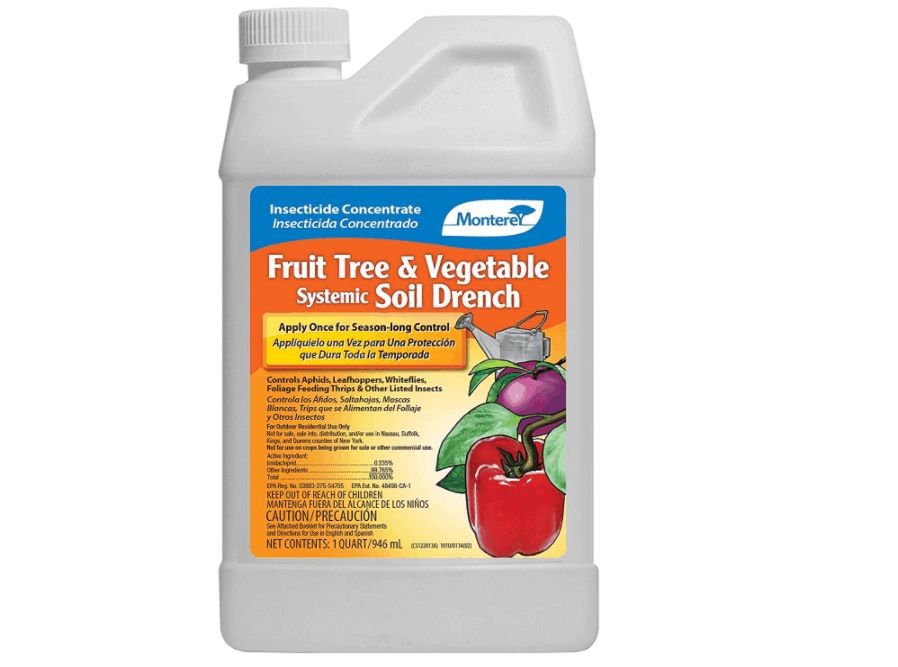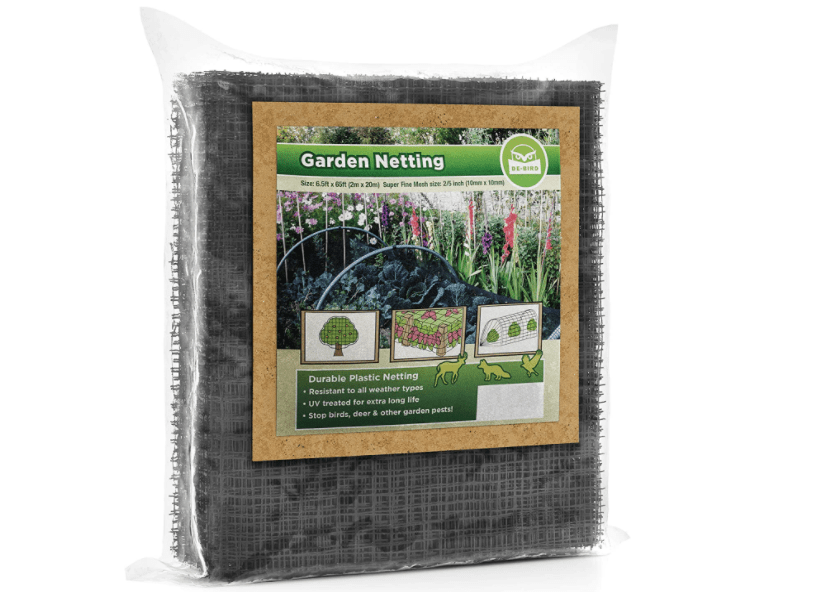- Majesty Palm Tree: How to Plant It and Keep It Alive - March 13, 2021
Sweet, juicy apples picked from its tree are the best kind of apples you’d ever eat. Having a fruit tree in your yard guarantees that you’d have this experience.
But how do you grow a fruit tree? What should you give them so that they’d thrive and give you lots of fruit? Get comfy as we give you a deep dive on choosing and identifying fruit trees, right down to our recommendations on how to grow them.
How to Identify Fruit Trees
There are two classes of fruit trees that are available. These are pome and stone.
Pome
According to Australia’s Department of Primary Industries, pome fruits are part of the Rosaceae family and further under the pomoideae subfamily. Pome fruits have a core that houses several seeds. The core is protected by a hard membrane that protects the seeds.
Pome trees are dormant in the winter, and they are deciduous. Some pome fruits are:
Apples
The Malus pumila, or apple, is one of the most widely cultivated in North America. More than 2,500 species are being grown in the continent. Apple tree leaves are simple and oval. You can find small serrations at the edges, and these leaves are alternately arranged on the branches with scaly and brown bark.
They measure two to five inches (5.1 to 12.7 centimeters) long and about 1.5 to 2.5 inches (four to 6.4 centimeters) wide. The leaves taper to a point. Apple trees have trunks that can be as thick as 24 inches (61 centimeters) in diameter.
When these trees bloom, you will have white flowers with five petals. These flowers are showy with a touch of pink, and they start blossoming near the end of spring. Over the summer, the fruits develop and mature. Apples are ready to eat by autumn. You can find ripe apples in different colors, usually red, yellow, or green, and every color combination of these three.
Pears
The Pyrus communis, or the European pear, is a deciduous tree also from the Rosaceae family. This tree is usually cultivated for its fruit. Pear trees are short, usually reaching 30 feet (nine meters) with a narrow crown. The leaves are simple and alternatively arranged on their branches.
The elliptical flowers have slightly serrated edges and measure around 0.7 to 4.7 inches (two to 12 centimeters. Pear trees often have white flowers that are an inch (2.5 centimeters) in diameter. For around two decades, the pear tree produces green fleshy fruit.
Nashi
The Pyrus pyrifolia have several common names, such as nashi pear or Asian pair. Nashi pear is native to Asia and has large and juicy fruits. The fruits can be eaten cooked or raw. Nashi pear trees can grow up to 30 to 40 feet (9.1 to 12.2 meters) tall. They prefer fertile soil but can grow with no problems with clay soils. There are also smaller trees or dwarf cultivars that are available.
The deciduous leaves can be green, orange, or yellow in color. In the autumn, the foliage turns burgundy or red. Measuring anywhere from three to six inches (7.6 to 15.2 centimeters), the simple leaves are alternately arranged and are lance-shaped.
It produces white flowers in time for spring. The cup-shaped flowers can measure anywhere from one to three inches (2.5 to 7.6 centimeters).
Quince
The Cydonia oblonga, or quince, looks quite different with its gnarled branches and a growth habit that is best described as crooked. Nevertheless, the fruits are delicious. A native of Asia, this tree’s leaves have a smooth surface, but the underside is hairy. The quince produces light pink or white flowers on small shoots.
The fruits are fragrant and large. It looks like either a pear or an apple, depending on the quince variety that you have. These trees reach around 16 to 26 feet (five to eight meters) in height and have an expected life of around 25 years.
Drupes or Stone Fruits
The other class of fruits is stone or drupes. Drupes have fleshy skin that covers the shell that houses the seeds. The fruits get their names for the pit or stone. The pit is large seeds. Drupes usually have thin skins, and these can sometimes be fuzzy. Most of these fruits need to be harvested before they can ripen.
Some examples are mango, coconut, apricot, cherry, peach, and plum.
Peach
The Prunus persica, or peach, trees can be quite difficult to grow because of the many pest and diseases that can attack them. But it gives you beautiful peach blossoms, on top of the delicious and sweet fruits. The single, double, and semi-double flowers appear first before the new leaves in April. These can range from white to deep red, and some flowers have two colors.
These flowers before fruits, which can mature any time from July to August. Peach trees can get up to 15 to 25 feet (4.6 to 7.6 meters) tall, and they can spread just as wide. The round crown can be dense with foliage as well.
Mango
Mangifera indica, or mango, is part of the Anacardiaceae family. This tree has a very thick trunk that holds its round and broad canopy. Mango trees often produce thick clusters of cream pink flowers on panicles. These flowers eventually fall off, and you can get oval-like mango fruits that have uneven sides.
These fruits are green when raw, but turns yellow to yellow-orange or red when it becomes ripe. Mango trees can reach up to 148 feet (45 meters), and each one can live for more than a century.
Coconut
Cocos nucifera, or the coconut palm, comes from the Arecaceae family, and it is grown primarily for its fruit, but every part of this tree can be used for different things. The stem can be slightly curved or erect with a swollen base. The stems are notable for their grayish color and leaf scars.
The leaves of the coconut tree are arranged spirally, and each tree can have anywhere from 60 to 70 leaves. They can be very long, usually reaching 23 feet (seven meters). The pinnate leaves can have anywhere from 200 to 250 leaflets. Moreover, the coconut tree produces a spike that has both male and female flowers.
The ovoid fruit has one seed and is safely nestled in the husk. The stony shell protects the seeds, and this is filled with liquid, which people call coconut water. The endosperm is edible and can be around 0.4 to one inch (one to 2.5 centimeters) thick. These palms can reach up to 98 feet (30 meters).
Coconut trees produce up to 75 fruits in any given year. They can last for up to 90 years.
Cherry
Prunus avium, or cherry, trees come from the Rosaceae family and have simple oval leaves alternate on the branches. These leaves can be anywhere from two to five inches (five to 13 centimeters) long. At the start of spring, the white flowers begin to appear. These are usually clustered in three to five, and each one is about an inch long.
The red fruits can be anywhere from 0.5 to one inch in diameter, usually maturing in the summer. These trees can thrive for six decades and reach up to 50 feet (15 meters) tall.
White Mulberry
Morus alba, or white mulberry, are not berries. Instead, these are clusters of small stone fruits, and each one has its own pits. This tree grows as tall as 30 to 50 feet (9.1 to 15.2 meters) and has a similar spread. It blooms with yellowish-green blowers starting in March.
When the flowers are fertilized, they form fruits an inch (2.5 centimeters) long. Ripe fruits can be pink or white, but some trees have purple, red, or black fruits. The dark green leaves can grow up to eight inches (20.3 centimeters) long and have serrated edges.
Where Do Fruit Trees Grow
Regardless of what climate you have, fruit trees can grow in your home. There are cold hardy fruit trees such as apple, pear, plum, and apricots that are cold-hardy and can continue to grow over the winter months with no problem.
And there are drought-tolerant fruit trees that can survive in USDA hardiness zones 7 to 11, such as pomegranate, kei apple, oriental persimmon, fig, natal plum, guava, and tamarind.
Uses of Fruit Trees
Most fruit trees are grown for food. These yummy fruits can be consumed raw or cooked. As a whole, fruit trees are better sources of food than annual crops. This is because they can be more tolerant of rainfall variability because of their perennial growth pattern and deeper root systems.
As such, you have a more consistent and more reliable source of food. What’s more, fruit trees can help give you nutritious food that may have some medicinal and health benefits.
For instance, Java plum is rich in iron and can help control your blood pressure levels while also acting as a blood purifier. Citrus fruits have loads of vitamins, while others can provide you with your needed minerals and nutrients.
For most fruits, you can even enjoy them for a longer time if you can them or make them into jams and jellies. Fruit trees can also earn you money by selling fruits that you cannot eat.
Other Uses
But aside from food and health benefits, you can also rely on fruit trees for other stuff. First is that fruit trees can make your yard more interesting. For the entire spring and sometimes in summer, your fruit will have awesome blooms, and these can be white, pink, red, or yellow, depending on the type of fruit trees you have.
And if you choose the right kinds of fruit trees, you will have a show of colors during autumn. For instance, persimmons have leaves that turn bright red to orange, while satsuma plums and mid-pride peaches have red, orange, or yellow fall foliage.
Coconut wood has been traditionally used for house posts in tropical countries, and it can be made into anything from walking sticks to flooring.
Environment-wise, fruit trees are great oxygen produces and it helps feed wildlife as well. More than that, you get to reduce transportation costs as your locally grown fruits means that you don’t have to waste oodles of time, money, and fuel transporting them.
How to Grow Fruit Trees From Seed
The good news is that fruit trees are not fuzzy, and they can thrive with minimal attention. But you should make sure that you give them the ideal conditions for them to be healthy.
Germinating Fruit Tree Seeds
When you harvest seeds from fruits, you should know that you should allow some time for the seeds to be ready to germinate. This time is called the after-ripening. After-ripening is when you expose seeds to cold environments to encourage them to germinate.
Two methods are recommended by the PennState Extension College of Agricultural Sciences.
Method 1
You will need to make a soil plot in the autumn and dig up a hole that is one or two times as deep as the longest dimension of the seed you want to plant. For instance, if you have a seed that is two inches (5.1 centimeters) long, you should make a two to four inches long hole.
You should bury the seed in the hole and cover it with soil. Then add around one to two inches of sand over the covered seeds. The sand will help make sure that the seeds germinate.
Method 2
Ensure that you have clean seeds with any bit of flesh removed from the pit or the seed. Air dry the seeds and then put these in a glass jar.
You should wait for the seeds to be ready for germination. Add moist sphagnum peat moss, shredded paper towels, or sand into the jar and close it by the middle of January. Put the jar inside the refrigerator until the last frosts have passed.
After 60 days, soak the seeds in water for 24 hours and then plant the seeds in the prepared beds. Make sure that the seedbeds are moist.
Other Tips
- Prevent chipmunks, squirrels, and other animals from digging up the seeds by placing a wire screen over your seed plot. When the new seedlings sprouts in the spring, you can remove the wire screen to ensure no bending.
- Do not add any fertilizers to newly planted seeds. You should wait until the seedlings are around six to eight inches (15.2 to 20.3 centimeters) tall before adding fertilizers.
- Make sure that you keep the fertilizers about two inches away from your seedlings.
- You should crack the shell for stone fruits that feature a hard covering without damaging the embryo inside.
- Seedlings of fruit trees develop taproots. You will need to cut these when you’re transplanting the seedlings.
Fruit Trees Growing Conditions
So how do you grow fruit trees from seed? You will need to choose a location where they can get full sun and grow in well-draining soil. Once growing, you will need to water them regularly and fertilize them too. But most of the time, you will be focusing on getting rid of pests and protecting your fruit trees from diseases.
When and How to Plant Fruit Trees
When starting fruit trees from seeds, you should know when to best germinate them. You will need to first germinate the seeds and then transplant them to the soil.
To give you an idea, apricot, nectarine, and peach seeds can be germinated in the summer and then put into soil in spring. Meanwhile, plum, cherries, pear, and apples require about two years of growing in a seedbed before being transplanted in July or August.
Bare Root Fruit Trees
Depending on what type of fruit tree that you’re going to plant and where you live, here are the best times to plant bare-root trees:
- Early spring: If you live in areas with cold winters, it’s best to wait until spring comes before you plant.
- Early spring, fall, or winter: If you live in areas with milder climates, you should time your planting when the tree is dormant.
- Spring or summer: You can wait until spring or summer to plant your fruit trees if you live in warmer climates.
Containerized Fruit Trees
If you have the tree in containers or burlap sacks, it’s safe to plant them anytime. This is because the trees are already accustomed to the soil, unlike the bare root ones. Plus, because you’d be transplanting these trees in the same soil in the pot or burlap, you’re not disturbing anything.
Fruit Trees Water Requirements
Water is one of the main requirements for your trees to produce a lot of fruits. In general, the younger the fruit tree, the more water it will need. Also, if the weather is hot or dry, you will need to give your trees more water during these days. Further, you should remember that you should water fruit trees deeply.
If you don’t, your trees will develop shallow root networks, which might not support the tree as it grows taller. As such, soaking the soil slowly and making sure the water goes deep into the soil is a better way to irrigate fruit trees rather than frequent but short soakings.
Newly-Planted Fruit Trees
When you have young fruit trees, you should give these more water to help them become more established. You should water the young trees when you first transplant them, ensuring that the soil will settle around the rootball. Deeply water your young trees when the top two inches (5.1 centimeters) of soil is dry. A thorough drenching once or twice weekly will allow your fruit trees’ roots to go deeper.
Mature Fruit Trees
Older trees will need less water, but a similarly thorough watering is still recommended. If you fail to do this, your trees might not bear a lot of the juicy fruits that you love.
Other Watering Tips
- Deciduous trees should be watered regularly until the fruits are harvested.
- Citrus trees and other evergreen trees will need to be watered until autumn.
- When your fruit trees are growing fruits, you will want to keep them watered. The moist soil, however, should never be waterlogged.
- Water more often during the summer or when you have a lot of hot days.
- Deep but infrequent watering is better for your fruit trees.
- If you don’t want to water too frequently or if you want to save on water, you should put mulch around your fruit trees to help the soil retain the moisture.
- You can buy drip irrigation systems that will help the tree have healthier and denser roots. Check out products such as the MIXC Greenhouse Micro Drip Irrigation Kit.
Fruit Trees Sun Requirements
Fruit trees need full sun or about six hours of sunlight every day to grow healthily. If they don’t get enough sun while actively growing, the fruits will not be at their best, both in taste and color.
The problem is that younger trees tend to burn easily, so you might want to give them protective shade for their trunks. To give them their own “sunscreen,” mix white interior latex paint such as RECOLOR Paint Recycled Content Interior Latex Paint with water.
Painting on the young tree trunks will compensate for the fact that these trees do not have large canopies to protect the trunk.
Chill Requirements
Fruit trees have chill requirements. Many fruit trees will require a certain number of hours exposed to temperatures below 46 degrees Fahrenheit (7.8 degrees Celsius).
For example, apple trees need about 900 to 1,200 hours of cold environments to flower and produce fruits. This is why you should first consider where you live and what kind of climate you have when choosing which fruit trees to plant.
On the other end of the spectrum, citrus fruit trees are not cold-hardy and may even be damaged when temperatures are freezing.
Canopies and Spacing to Ensure Your Trees Get Enough Sun
When planting fruit trees, you should consider just how wide their canopies can be when they fully mature. For instance, peach trees can have canopies measuring 25 feet (7.6 meters), while standard-sized apple trees can get canopies of up to 40 feet (12.2 meters) wide.
You will need to make sure that your trees are planted with adequate spacing in between so that the shorter trees can still get enough sunlight.
Best Fruit Trees Fertilizer
When choosing fertilizers for your fruit trees, be sure to note the NPK ratio, which reveals the levels of nitrogen (N), phosphorus (P), and potassium (K) in the mix. For young trees, you will want to use a balanced fertilizer. Young trees will need nitrogen for that green growth that it needs for photosynthesis. It also needs phosphorus for healthier roots, while potassium will help regulate the processes and metabolism of your young tree.
However, mature fruit trees would need more phosphate so that they would have more flowers and fruits. You should fertilize fruit trees during their growing season, which means you should start feeding them in early spring for most varieties.
To get more ideas on how to properly fertilize fruit trees, watch this video:
Our Recommendations
Here are the fertilizer products that you can try:
- Miracle-Gro Fruit & Citrus Plant Food Spikes
- Jobe’s 100046754 1612 Fertilizer Spike,
- Dr. Earth 708P Organic 9 Fruit Tree Fertilizer
- Down to Earth Organic Fruit Tree Fertilizer Mix
Best Fruit Trees Companion Plantings
Your fruit trees can benefit from companion plants in several ways. Primarily, these plants will attract pollinators that will help pollinate the flowers to develop into a fruit. These plants can also amend the soil and become ground cover. You don’t have to worry about the soil not being well-draining, or the water you give your fruit trees will evaporate quickly.
And because these beneficial plants are there, there is no room for weeds to grow. Some companion plants can also repel pests.
But before you choose companion plants for your trees, be sure that your tree is already mature. Choose companion plants that have shallow roots and can thrive in partial shade. To avoid competition, you should also keep them about two feet (61 centimeters) away from the tree.
What are the best companion plants for your fruit trees? Here are some suggestions:
- Legumes, such as beans, are delicious for humans, but these plants can also help give your fruit trees more nitrogen.
- Comfrey helps your fruit trees by boosting the soil’s nitrogen, potassium, phosphorus, and calcium because of the long taproots that can reach deeper into the soil. You can also cut its leaves and use them as mulch for your trees.
- When your marigolds bloom, they will invite beneficial insects such as bees and other pollinators. Marigolds can also drive nematodes away. What’s more, marigolds can be planted further away from your trees, as it requires full sun.
- Daisies, purple coneflower, black-eyed Susan, and other wildflowers can give your trees a wonderful backdrop and even a burst of color when they bloom. But their biggest help comes from attracting more pollinators.
- Lavender is used as an aromatic and an herb. Lavender can also draw pollinators to your fruit trees without you having to do extra work in keeping them alive. Lavender loves partial and full sun and can survive even when water is scarce.
- Garlic and onion are great when you’re trying to keep pests away. These two plants have been proven to drive away mites, aphids, maggots, and even deer and rabbits.
- Ginger will also help keep the pests away. And like garlic and onion, ginger has shallow roots that will not compete with your trees.
Fruit Trees Diseases and Common Problems
There are a lot of insects that can pose a threat to your fruit trees. Some of the most common are:
- Winter moth caterpillars can eat the leaves of your fruit trees, quickly leaving them bare.
- Peach scab is a fungal disease that can damage the fruits, twigs, and leaves of nectarine, peach, and apricot trees.
- Crown gall is a kind of bacteria that lives in the soil, and this disease can often infect peach, plum, cherry, or apple trees. The infection can be small at first, but it grows significantly as time goes by.
- Cherry leaf spot disease can affect all kinds of cherry trees. The purple spots on the foliage look innocent at first, but the leaves will soon die. You are left with a bald cherry tree with a fungus infection.
- Fire blight is caused by another kind of bacteria, which can infect crabapples, apples, or pear trees. While it affects different parts of your fruit trees, fire blight is detected by leaves that look like that they have been burned.
Other insects that can damage your fruit trees are:
- Thrips
- Stinkbugs
- Sawfly
- Mites
- Leafhoppers
- Lanternfly
- Japanese beetle
- Gall
- Fruitworm
- Fruit flies
- Ear wig
- Drosophila
- Codling moth
- Cankerworms
- Campylomma bug
- Bumble flower beetle
- Bud blisters
- Borers
- Aphids
Suckers
While not necessarily a big problem, fruit trees are very fond of having suckers or stems that come from the roots. The problem with suckers is that they divide the energy and resources that your fruit tree should be devoted to producing flowers and fruits.
What’s more, these suckers tend to ruin the aesthetics of your fruit tree. Instead of having one majestic trunk that spreads out at the crown, you have one trunk and several smaller stems. Get rid of suckers by digging into the soil and finding where these additional growths are coming from. Cut the sucker at the origin, or else it will just grow back and sometimes with more stems than ever.
Fruit Trees Treatments and Maintenance
For the most part, you can get rid of insects, fungi, and mites from your fruit trees using different kinds of products. We recommend:
- Monterey LG 6274 Fruit Tree & Vegetable Systemic Soil Drench
- Bonide (BND217) – Citrus, Fruit, and Nut Orchard Spray
- Trifecta Crop Control Ready to Use Maximum Strength Natural Pesticide, Fungicide, Miticide, Insecticide
- Ortho Tree & Shrub Fruit Tree Spray
- BioAdvanced 701520A Fruit, Citrus & Vegetable Insect Control
Netting
If you have a problem with birds and bats always eating the fruits on your tree, then you might want to invest in garden netting. Check out this De-Bird Bird Netting, which allows you to protect your trees. You can finally sleep easy knowing that the fruits are protected from birds, bats, deer, and other wildlife.
Pruning
Your fruit trees need to be maintained yearly or for some types, more frequently than that. One of the things that you should always do is to prune.
Pruning helps to make sure that sunlight reaches all branches so that you have more fruits. According to this article, fruit trees are best pruned when they are dormant and don’t have leaves. As a bonus, it’s easier to see the branches when there are no leaves.
Aside from that, you should always prune dead or diseased branches immediately. This video will help you learn how to prune fruit trees correctly.
How to Remove Fruit Trees
There are times when you’d want to cut down a fruit tree. Perhaps, you don’t like how it looks in your yard, or you’re planning to replace it with something else.
Here’s what you should do:
- Mix water and a systemic herbicide such as Bonide 274 728639280241 Vine & Stump Killer. It’s important to kill the tree’s root system so that it doesn’t send up suckers when you cut it.
- Cut the limbs first and then start working on the trunk. Cut down the tree until only four to six inches (10.2 to 15.2 centimeters) are left.
- Drill holes that are about 0.5 inches (1.3 centimeters) in diameter into the stump. Pour the herbicide solution into these holes allowing it to seep down to the roots and killing them.
- You should also paint the stump where the cut is with the herbicide solution. Do this within four hours before the wood callouses.
Where to Buy Fruit Trees Seeds Online
If you’re raring to apply what you have learned in this article, then it’s time to buy seeds. First, Sheffield’s Seed Company has some rare fruit trees in their offerings, including Asimina, Carya, Corylus, and diospyros.
Meanwhile, Plant World Seeds have tropical fruit trees for you to choose from. Amazon also has an extensive selection of fruit tree seeds that you can buy.
And, of course, Etsy won’t be far behind in giving you a selection of seeds. You also have Burpee, which puts together all types of plants that bear fruit. If you’re into exotic fruits such as kiwi, cashew, or Graviola, then head on to Rare Exotic Seeds.
Where to Buy Fruit Trees Saplings Online
Fast Growing Trees has a neat collection including apple, cherry, citrus, avocado, tropical fruit trees, and others. Meanwhile, Raintree Nursery has hundreds of fruit trees for sale, but they make it easier for you by allowing you to choose the trees that can grow where you are.
The Arbor Day Foundation offers fruit and nut trees such as apples, mulberries, plums, and pears. Other online retailers that sell fruit trees include Stark Bro’s, Chief River Nursery Company, and Willis Orchard Co.
FAQs
Question: How fast do trees bear fruit?
Answer: You will need to be patient with fruit trees as it can take years from when you plant it before it bears fruits for trees that you buy online, from nurseries or garden centers.
But if you plant fruit trees from seeds, you will have to wait for at least three years for them to bear fruit. To give you a rough idea, the time needed for fruit trees to bear fruit is as follows:
- Apple: Four to five years
- Tart cherry: Three to five years
- Plum: Three to five years
- Pear: Four to six years
Question: Why is my fruit tree not bearing fruit?
Answer: There are a lot of factors why your fruit tree might not be bearing fruit. It may be because it didn’t produce flowers, or the pollination was poor. Younger fruit trees might not produce flowers until they are old enough to do so.
Or it may be because your tree is not getting the ideal conditions for growth, such as having heavy soil, not enough sunlight, or you may have planted it poorly. Poor pollination is caused by not having enough bees and other pollinators.
Some species are not self-pollinators. For instance, an apple tree will need another one nearby for its flowers to get pollinated. Further, if low temperatures were present when your tree was blooming, then the flowers might not turn into fruits.
Question: How do you choose which fruit trees to plant?
Answer: Fruit trees require big spaces to grow healthily. If you don’t have a spacious yard, you will want to choose a dwarf variety of whatever you want to plant. There are dwarf versions of lemons, peaches, cherries, and just about any fruit tree you have.
Remember also that fruit trees need a lot of sunlight, so if your garden is sunny, you have many options. But if you have a garden that doesn’t get full sun for most of the day, you can settle for sour cherries and fruit trees that produce less sweet fruits.
You should also consider where you live. Choose only fruit trees that will survive the climate in your area, and a good indicator of that is their USDA hardiness rating.
Grow the Perfect Fruit Tree Today
Fruit trees benefit you more than any other plant as it not only gives your garden a focal point of interest, but it can also beautify it when the flowers come. When the blooms die, you can have a bountiful harvest of fruit.
Just follow our recommendations on how to plant your fruit trees and keep them healthy.
Research Citations
- University of Florida: Prunus persica
- Balcony Garden Web: 25 Best Drought Tolerant Fruit Trees | Low Maintenance Fruit Trees
- Couch to Homestead: The 10 Best Companion Plants for Fruit Trees
- PennState Extension: Hobbiest Gardening – Growing Fruit Tree Plants from Seed
- SFGate Home Guides: The Average Width of a Peach Tree
- SFGate Home Guides: How Do Fruit Trees Help the Environment?
- SFGate Home Guides: How Much Sun Do Fruit Trees Need?
- SFGate Home Guides: How Much Water Should One Give a Fruit Tree?
- SFGate Home Guides: What Time of Year Do You Plant Fruit Trees?
- Iowa State Univeristy Extension and Outreach: How soon will a newly planted fruit tree begin to bear fruit?
- Iowa State Univeristy Extension and Outreach: Why isn’t my apple tree bearing fruit?
- NC State Extension: Pyrus pyrifolia
- Plant Village: Cherry (including sour)
- Plant Village: Coconuts
- Plant Village: Mango
- Plant Village: Pear
- Plant Village: Quince
- UC Master Gardener Program: Fruit Trees with Fall Color
- Department of Primary Industries: Apples, pears and other pome fruit
- HGTV: Common Fruit Tree Problems
- Keim: Coconut Palm
- Shenandoah National Park Virginia: Apple Tree
- ScienceDirect: Fruit Trees
- Stark Bro’s: How to Fertilize New Fruit Trees
- Cumberland Times-News: Pruning depends on whether they are pome or stone fruit trees
- YouTube: How and when to fertilizing fruit trees
- YouTube: How to Prune Fruit Trees The Right Way Every Time



